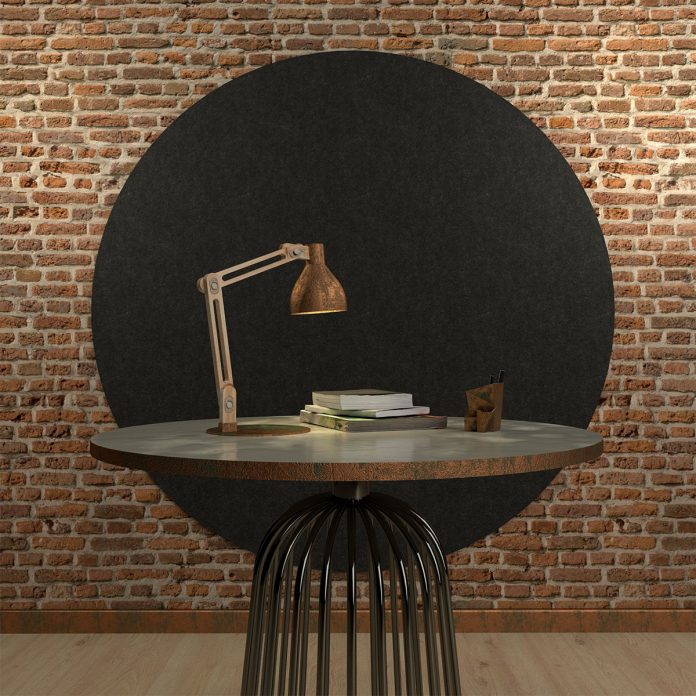
In this article we will see where the main difference between acoustic insulation as such and acoustic panels lies, what the latter are and what options we can find.
The objective of acoustic insulation is to soundproof, that is, to establish a barrier that prevents, or rather reduces, the passage of sound from one room to another.
To achieve this, it is necessary to install the acoustic materials in one hundred percent of the walls and ceilings, even, if we had the possibility, on the floor. Due to its complexity, carrying out this type of installation is only within the reach of DIY enthusiasts with an advanced level and, of course, professionals. In this other article Install acoustic insulation in walls you can see its installation.
On the other hand, acoustic panels have the advantage of being able to be installed in strategic places and only in a percentage of the walls and ceilings of the room. In addition, its installation is much easier than the previous system and, therefore, it is within the reach of DIY enthusiasts with less skill and knowledge.
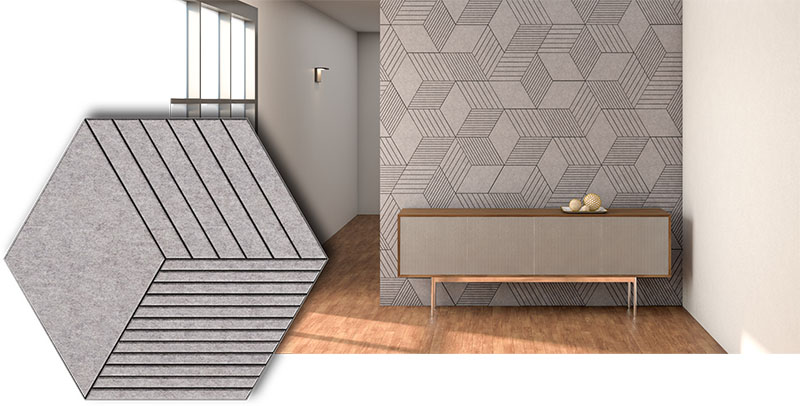
What is the operation of acoustic panels
The main function of acoustic panels is to reduce the sounds that are transmitted from one room to another, at the same time that they manage to reduce the reverberation inside, thus achieving greater auditory comfort and, of course, a reduction in sound. .
This is achieved thanks to the porosity of the materials of these sound-absorbing panels.
They are widely used in offices, meeting rooms, cinemas, auditoriums, restaurants and, in general, in any business or trade where the sound level is usually high.
Advantages of acoustic panels
This type of material provides a good number of advantages, being, in our opinion, the main…
Easy installation
They are handled and machined exactly as if they were wooden boards.
Its installation is usually done with mounting adhesive, although they also accept nails, screws and staples.
Does not need decorative finish
The acoustic panel itself is, in itself, a decorative element so, once installed, it does not need painting, lining, or any type of additional finish; since they are covered on one or both sides with decorative laminates.
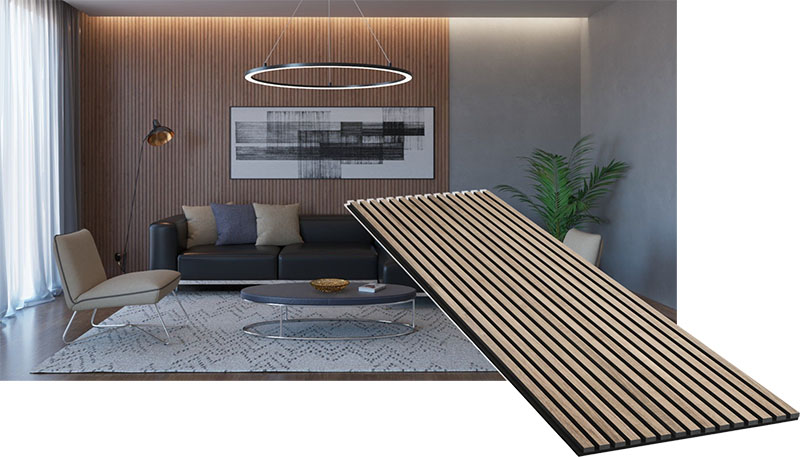
material properties
Acoustic panels can be made with a PET core, that is, they are made by recycling used plastics. So the properties of this material provide the following advantages:
- It is environmentally friendly.
- Durable surfaces.
- Water resistant, so they do not swell with moisture.
- They are light in weight and have high mechanical resistance.
- They do not contain volatile products.
- They are not allergenic, they do not rot and they do not generate bacteria or fungi.
Acoustic panel applications
The applications of acoustic panels are huge. To begin with, they cover practically any field, be it commercial, industrial or even for the home.
- Home furniture.
- Office furniture.
- Cladding of walls, ceilings and pillars.
- Sanitation.
- Cabin manufacturing.
- Acoustic partitions and screens.
- Mobile partitions and interior divisions.
- Lined machines.
decorative options
The decorative options offered by acoustic panels are practically endless.
There are from very simple and sober smooth designs.
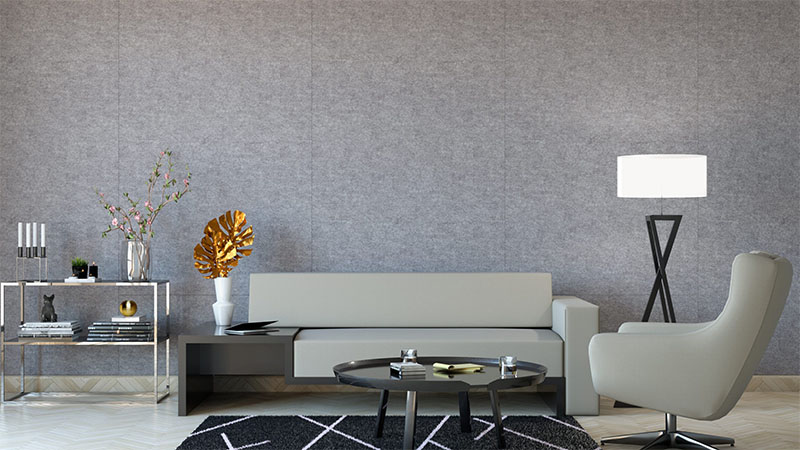
Designs covered on one side with wooden slats.
Geometric “tiles” that provide multiple and infinite compositions.
Cheerful and colorful compositions through smaller beveled panels.
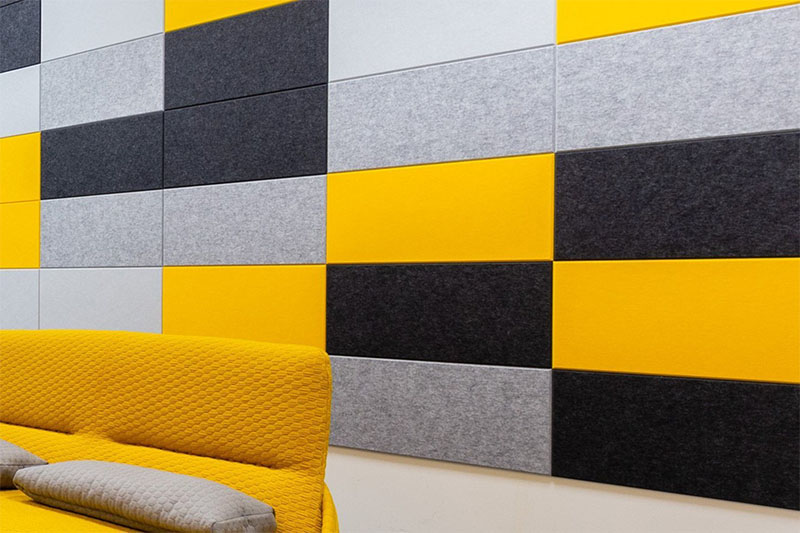
circular panels.
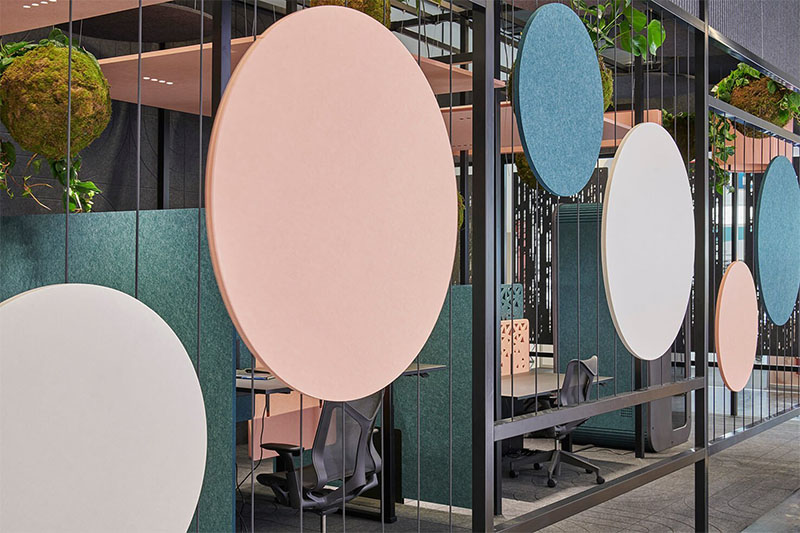
As we say, the decorative possibilities of the panels are enormous.
.



